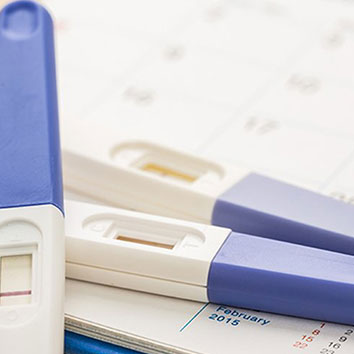Intrauterine growth retardation or IUGR occurs, in around 3-5% of all pregnancies. This is a condition where the baby’s growth is compromised and restricted, so that they are smaller than they should be. By definition, a baby with IUGR has a birth weight which is under the 5th percentile for their weight. Other names for IUGR are Small for Gestational Age or SGA, Foetal Growth Retardation or Placental Insufficiency.
One of the goals of regular antenatal care is to assess if the baby is growing as it needs to. The mother’s abdominal size is compared with her weeks of gestation. Although individual mothers vary in their tummy size, there are still standard abdominal markers which indicate the baby is growing. For example, by the end of the first trimester at 12 weeks, the uterus should have grown to the level of the mother’s pubic bone and by 20 weeks of gestation, the top of the uterus, or fundus, should be at the level of her navel.
Risk factors for growth restriction
- Mothers who have poor antenatal education, whose dietary intake is insufficient and comes from low socioeconomic groups.
- Mothers who have previously had a baby who had IUGR.
- Smoking cigarettes, taking illicit drugs and drinking alcohol are all risk factors for IUGR.
- Babies who have a chromosomal abnormality such as Down Syndrome, Turner Syndrome or an abnormality of one of their major organs more commonly have IUGR.
- Babies who have contracted an infection such as rubella, toxoplasmosis or cytomegalovirus whilst in the womb.
- Mothers who are unwell themselves or who have had other pregnancy related complications.
- Mothers with high blood pressure or pre-eclampsia.
- When there is placental insufficiency due to an abnormal placenta or there is placenta praevia.
- IUGR is more common in twin pregnancies, particularly identical twins.
- Mothers who are having their first baby. Alternately, mothers who are pregnant with their fifth or subsequent baby.
- Genetics plays a part. Mothers who themselves were small at birth and whose partner was small as well tend to have smaller babies themselves.
What are the different types of IUGR?
Symmetrical growth restriction relates to early pregnancy, when the baby’s head and body are both small. Symmetrical growth restriction basically means there is an overall stunting of the baby’s growth. This occurs when the baby has had an infection, or has been exposed to different toxic substances such as nicotine, illicit drugs or alcohol.
Asymmetrical growth restriction relates to the period after 20 weeks when the placenta is not working as effectively as it needs to. This occurs during pre-eclampsia, in multiple pregnancies and if the baby has an abnormality. It happens more or less as a protective mechanism to protect the baby’s brain and heart and ensure they keep growing. These organs are prioritised because they are essential to the baby’s survival. However, there is a cost to the rest of their body as their fat stores are used up. Babies with asymmetrical growth restriction look scrawny when they are born. They appear thin and like “little old men”. They tend to have a very worried, hungry face and seem to constantly be hungry.
How is intrauterine growth restriction diagnosed?
When mothers go for antenatal appointments, their uterine growth is checked through abdominal palpation. This provides a reasonable guide to whether a baby is growing as it should be. The fundal height i.e. the top of the uterus is measured from the mother’s public symphysis (her pubic bone) and this is compared with her weeks of gestation.
The most accurate way to diagnose IUGR is via ultrasound. Even if a mother is sure of her dates, an ultrasound can provide a comprehensive overview of the baby’s development and size. As the pregnancy progresses, the baby’s growth can be compared with previous scans to compare its increase in size. Growth parameters are checked which include:
- The baby’s head circumference
- The length of their femur – the long bone which runs from the hip to the knee
- Their abdominal girth measurement
- The blood flow from the placenta through the umbilical cord
Treatment/management for IUGR
Treatment is usually based around close monitoring of the baby to ensure they are not being compromised. Regular scans, foetal monitoring, antenatal checks for the mother and regular weighing are all fairly standard management. If the medical and obstetric team assess that the baby would be better off being delivered, rather than remaining in the uterus, labour may be induced or a caesarean section delivery performed. Obviously, weighing up the costs vs. benefits needs to be done carefully; premature babies come with their own unique set of complications.
Bed rest, referral to a specialist dietician, minimising stress and aiming for a calm, enjoyable pregnancy all help. Unfortunately, there is no guarantee that these strategies will correct the situation. Sometimes, the only solution is to nurture a mother and her baby along until they are at a reasonably safe gestational stage; the baby is viable and then caesarean section delivery is organised. Babies with IUGR stress easily which is why a normal delivery is not always possible.
Risks to the baby of having IUGR
- More likely to become distressed during labour and not be able to breathe independently.
- May have trouble maintaining their own temperature due to immaturity and low fat stores.
- Can be very hungry babies, even in the early days following delivery.
- May have problems with low blood sugar and require monitoring in a special care unit.
- Babies with IUGR are more prone to infections and becoming unwell, simply because they are less robust than normal sized babies.
Here’s the good news
As long as the baby does not have an abnormality and apart from being born small, is otherwise normal and healthy, the odds are high that they will do very well. Frequent feeding, monitoring of intake and regular weighing all help to support IUGR babies towards a healthy weight gain. Ideally, breastfeeding should be established as soon after birth as possible. Colostrum is the perfect food for new-born babies as it is high in kilojoules, fat and antibodies to fight infection. Mothers of babies with IUGR need to accept that it can take weeks of frequent feeding, offering the breast on “demand” and not expecting to have any regular feeding regime, before their small baby catches up.
Regular attendance at the child health centre or GP is important. Babies with IUGR need to be weighed and measured, then plotted on their percentile (growth) charts. Babies who drop down on their growth line need to be referred for specialist paediatric monitoring.












